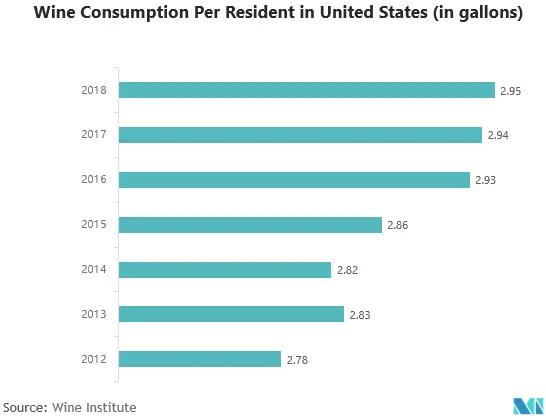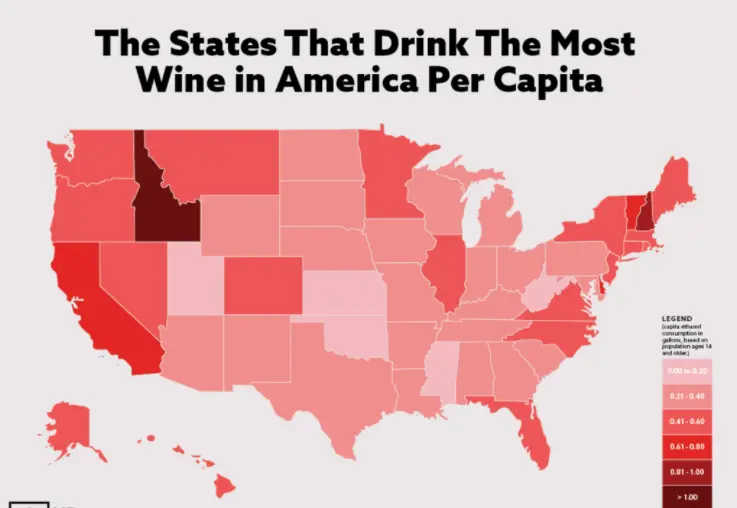Market Trends of Wine Packaging Industry
This section covers the major market trends shaping the US Wine Packaging Market according to our research experts:
Glass as a packaging material has largest revenue share in Wine Packaging Market.
- Glass packaging is the most dominant form of wine packaging. The properties of glass are well suited to the nature of wine, not matched by plastic or even metals. According to the report titled, Beverage Information Group, in July 2020, the consumption of table wine amounted to approximately 310.72 million 9-liter cases in the United States in 2019.
- In January 2020, Ardagh Group, Glass - North America, the largest domestic manufacturer of glass bottles in the US wine market, introduced six new sophisticated glass wine bottle designs.
- The ongoing trade war between the United States and China may impact the country's glass packaging market. More than 50% of the glass bottles used in the US wine industry are imported from China; and due to increase in the tariff rate imposed on Chinese imports, the need for improving glass manufacturing infrastructure is expected to grow, leading to a rise in the overall cost of the product in coming years.
- Wine manufacturers are becoming increasingly more innovative in order to attract customers with their packaging, and are producing new concepts and designs.

Bag In Box is the fastest growing product type in Wine Packaging Market.
- The bag in box (BIB) wine packaging was first introduced by William R Scholle, a U.S chemical engineer in 1995. The BIB packaging can preserve wine for up to 8 weeks after opening compared to 2-3 days offered by glass bottles and thus lower the carbon footprint.
- BIB packaging is portable-friendly and is also applicable for institutional servings. For instance, the packaging is designed to be shatterproof, allowing them to be used in stadiums, concerts, and amusement parks. Also, the boxes are manufactured with air-tight characteristics to extend the freshness of wine.
- The BIB type packaging consists mainly three parts: pouches, corrugated cardboard, caps/closures. The caps and closures are ideally made of plastic, but vendors in the market are investing in environmentally friendly closures such as bio-based caps. For instance,Tetra Pak international SA ordered bio-based caps made of renewable HDPE (High-Density Poly-Ethylene), derived from sugarcane for pouches closures.
- According to Smurfit Kappa, during the COVID-19 pandemic consumer demand for this type of packaging surged in the UK and France as it attracted about 3.7 million consumers in the region, A similar trend was seen in the U.S as well. This boosted the need for export the packaging for the vendors in the United States.


